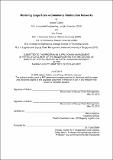| dc.description.abstract | As urbanization and e-commerce continue to grow at a rapid rate, companies are rethinking the way they operate their final-mile distribution networks to prepare for the scaling of their costs. How can companies leverage their existing e-commerce distribution networks to fulfill demand across multiple service offerings, and should they jointly consider inventory control decisions in those design decisions? We explore this question by examining where companies locate inventory, how they use their existing facilities, and how both are used to satisfy demand. This research uses the augmented routing cost estimation (ARCE) formula alongside mixed-integer linear programming to determine the most cost-optimal network design for an e-commerce retailer. Overall, we determined that inventory control decisions have a significant impact on e-commerce distribution networks and should be jointly considered when considering network design. Alongside the solution, the managerial insights derived from our findings support multiple strategies and offer considerations in implementing a redesigned distribution network, especially if a company is limited in their ability to reorder inventory or have limitations in their transhipment operations. | en_US |
